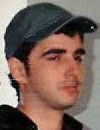- Blake Scholl of Boom Supersonic highlighted the U.S.’s lead in supersonic aviation with the XP-1 prototype, which flies without a sonic boom, but warned that a 1970s regulation banning flights over Mach 1 hinders progress, unlike China’s unrestricted push for a jet 50 times faster than the Concorde.
- He showcased the Boom Overture’s potential to cut travel times, like New York to London in 3.5 hours or a U.S. coast-to-coast trip 90 minutes faster, emphasizing its benefits for convenience, economic security, and military innovation, given a quarter of Air Force planes are modified commercial jets.
- Scholl criticized the outdated U.S. speed limit regulation, advocating for a noise-based rule instead, and suggested a supersonic Air Force One to replace the aging 747, arguing it reflects national prestige and technological superiority in the face of China’s advances.

Blake Scholl, CEO of Boom Supersonic, appeared on Fox Business to discuss the intensifying race in supersonic aviation, spotlighting China’s unveiling of a new jet designed to outpace the Concorde by 50 times while minimizing sonic boom noise. Scholl emphasized that aviation symbolizes technological dominance, a domain where the U.S. currently leads with Boom’s XP-1 prototype-the world’s only operational nonmilitary supersonic jet, capable of breaking the sound barrier without a disruptive boom. Yet, he warned that America risks losing this edge, not to China’s advancements, but to its own regulatory shackles, pointing to a 1970s-era ban on flights exceeding Mach 1 that has stifled innovation for over 50 years. China, unencumbered by such rules, is aggressively pursuing supersonic technology, amplifying the stakes in this technological and symbolic arms race.
Scholl painted a vivid picture of the transformative potential of faster flight, drawing from Boom’s Overture jet, a successor to the Concorde. This aircraft could slash travel times dramatically – New York to London in just 3.5 hours, or a coast-to-coast U.S. trip 90 minutes quicker – without an audible sonic boom, thanks to advanced engineering. He envisioned a future where someone could leave Washington, D.C., in the morning, attend an afternoon meeting in London, and return home to tuck their kids into bed that same night. Such capabilities, he argued, are not just about convenience but also about economic and national security. With Boeing, the U.S.’s top exporter, stagnant on new plane designs for over 20 years, and a quarter of Air Force planes relying on modified commercial models like tankers and spy planes, Scholl stressed that next-generation commercial jets are vital to maintaining military prowess.
The regulatory hurdle, Scholl asserted, is absurdly outdated—a blanket speed limit rather than a noise-based restriction. He proposed a straightforward fix: permit supersonic flight if it produces no disruptive boom, a standard Boom has already met with its XB-1 jet, which broke the sound barrier three times in its final test flight. This regulatory lag contrasts sharply with China’s unfettered progress, a disparity Scholl linked to broader implications of soft power and global perception. He even floated the idea of upgrading Air Force One to a supersonic model, calling the current decades-old 747 a “national embarrassment” compared to Xi Jinping’s modern equivalent. For Scholl, supersonic flight isn’t just for presidents—it’s a leap forward for everyone, from families to military strategists, if only the U.S. can unshackle itself from its own past.
WallStreetPit does not provide investment advice. All rights reserved.
- Bulenox: Get 45% to 91% OFF ... Use Discount Code: UNO
- Risk Our Money Not Yours | Get 50% to 90% OFF ... Use Discount Code: MMBVBKSM
Disclaimer: This page contains affiliate links. If you choose to make a purchase after clicking a link, we may receive a commission at no additional cost to you. Thank you for your support!


Leave a Reply